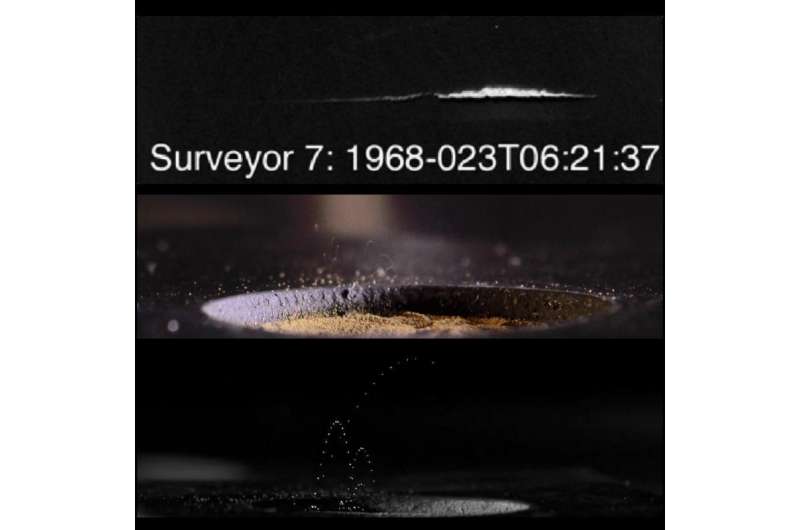Credit: NASA
As millions on Earth enjoy a spectacular view of a supermoon on Dec. 14, a NASA-funded research team is reviewing the results of recent laboratory experiments that explain why dust "levitates" on the moon.
The research by a member of NASA's Solar System Exploration Research Virtual Institute (SSERVI), hosted by NASA's Ames Research Center in Silicon Valley, California, explains how dust may be transporting across vast regions above the lunar surface and rings of Saturn, without winds or flowing water.
Learning about these fundamental processes is helping scientists understand how dust and static electricity behave on airless bodies, and how they affect surface mechanical and electrical systems. This and other SSERVI research is helping NASA address key strategic knowledge gaps for airless bodies such as asteroids or the moons of Mars, Phobos and Deimos, which are likely stepping stones along our journey to Mars.
The study builds on observations from the Apollo era to the recent Rosetta comet mission, and brings to closure a long-standing question about electrostatic dust transport seen on the moon and other airless planetary bodies. The research was conducted at the Institute for Modeling Plasma, Atmospheres and Cosmic Dust at the University of Colorado Boulder, and was published recently in the journal of Geophysical Research Letters.
The phenomenon shows up as high-altitude ray-pattern streamers above the lunar surface reported by Apollo astronauts, as well as intermittently appearing radial spokes first seen by the Voyager spacecraft over the rings of Saturn, and the fine dust deposits, or "dust ponds" in craters on Eros. These are all the examples of dust transporting across vast regions without winds or flowing water. Scientists believed electrostatic dust processes could explain these space observations, but until now there were no studies to support these explanations.
Mihaly Horanyi at the University of Colorado in Boulder and his team recorded micron-sized dust particles jumping several centimeters high under ultraviolet (UV) radiation or exposure to plasmas. On Earth's moon, these dust particles would have been lofted more than 4 inches (10 centimeters) above the lunar surface, leading researchers to conclude that the moon's "horizon glow"—seen in images taken by Surveyor 5, 6, and 7 five decades ago—may have been caused in part by sunlight scattering in a cloud of electrostatically lofted dust particles.
"This new 'patched charge model' resolved a fundamental mechanism of dust charging and transport, which has been puzzling scientists for decades," said Xu Wang, the paper's first author.
One of the key science findings is that the emission and re-absorption of photo/secondary electrons at the walls of micro-cavities formed between neighboring dust particles can generate unexpectedly large electrical charges and intense particle-particle repulsive forces. This can cause dust particles to move and lift off the surface, or "levitate." And not just single-sized dust particles—large aggregates can be lofted as well.
"We expect dust particles to mobilize and transport electrostatically over the entire lunar surface, as well as the surface of any other airless planetary body," Wang said. "If so, electrostatic dust activity may be also responsible for the degradation of retroreflectors on the lunar surface."
The laboratory observations also showed dusty surfaces becoming smooth as a consequence of dust mobilization. These electrostatic dust processes could help to explain the formation of the "dust ponds" on asteroid Eros and comet 67P, and the unexpectedly smooth surface on Saturn's icy satellite Atlas.
More information: For more information about SSERVI and select member teams, visit sservi.nasa.gov X. Wang et al. Dust charging and transport on airless planetary bodies, Geophysical Research Letters (2016). DOI: 10.1002/2016GL069491 , onlinelibrary.wiley.com/doi/10 … 02/2016GL069491/full
Journal information: Geophysical Research Letters
Provided by NASA
























